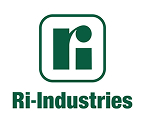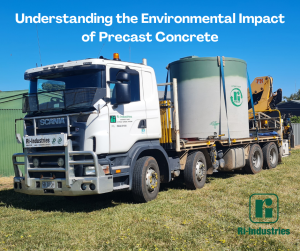Concrete isn’t typically considered environmentally friendly, but the building industry is actively working to reduce its carbon footprint and resource use. In South Australia, more local building projects are adopting low-carbon materials and more sustainable construction practices using concrete.
Precast concrete is often seen as a more environmentally friendly alternative to traditional (in-situ) concrete. But what makes it a greener choice? Let’s explore how the construction industry is using precast concrete to support more sustainable outcomes and shape a greener future.
Lower Carbon Emissions
One of the most significant environmental advantages of precast concrete is its ability to reduce carbon emissions. Factory-based production allows for optimal energy usage and advanced curing techniques, which can cut the CO₂ footprint by up to 25% compared to traditional on-site concrete pouring. Additionally, by transporting finished components to the construction site – rather than raw materials for on-site mixing -precast concrete further reduces emissions related to transportation and on-site machinery use.
Reduced Material Waste
Precast concrete is manufactured in controlled factory environments, enabling precise measurements and efficient use of materials. This process can reduce material waste by up to 20% compared to on-site construction. Molds are reused, and any excess material can often be recycled directly back into production, supporting a circular economy and minimising landfill contributions.
Durability and Longevity
The durability of precast concrete means structures last longer and require less frequent repairs or replacements. This longevity translates to lower resource consumption and waste over the building’s lifecycle. Precast panels also provide superior protection for insulation and other building materials, further reducing maintenance needs and prolonging the life of the overall structure.
Energy Efficiency in Buildings
Precast concrete components can be designed with built-in insulation, improving a building’s energy efficiency and reducing ongoing heating and cooling costs. The high thermal mass of concrete helps regulate indoor temperatures, contributing to lower operational emissions over time.
Precast concrete stands out as a more sustainable building material thanks to its reduced carbon emissions, efficient use of resources, incorporation of recycled materials, and long-term durability. As the industry continues to innovate, precast concrete will play an increasingly important role in building a more sustainable future for construction. To learn how Ri-Industries can help you with your precast needs, please call 08 8444 8100.

